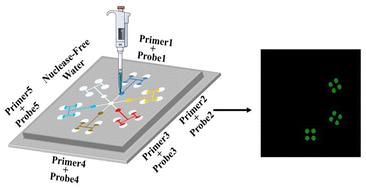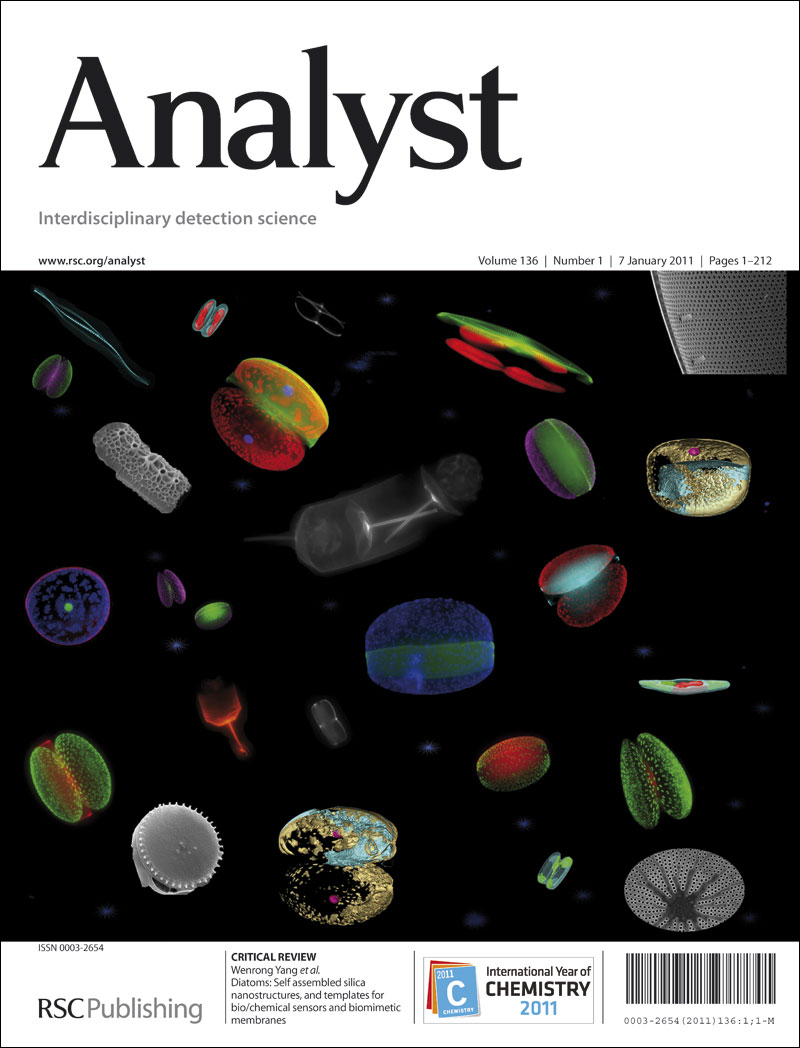A directional self-priming continuous-driven compartmentalized microfluidic chip for multiplexed pathogen detection
IF 3.3
3区 化学
Q2 CHEMISTRY, ANALYTICAL
引用次数: 0
Abstract
Rapid and efficient screening of foodborne pathogens is crucial for preventing bacterial spread and food poisoning. However, developing a multi-detection method that is easy to operate, offers good stability, and achieves high efficiency remains an enormous challenge. Existing multiplexed nucleic acid detection methods suffer from complex designs, leading to complicated operations, and non-robust sample introduction, causing primer/probe crosstalk and false-positive results. To address these issues, we developed a directional self-priming continuous-driven multiplexed detection microfluidic chip based on a snowflake shaped-inspired design with six branches, and each branch carried a unique functional input inlet for different specific targets, enabling simultaneous detection of multiple targets from one sample using monochrome fluorescence. Based on the PDMS negative pressure storage capacity, this chip explored the self-priming method that enables the continuous loading of primers/probes and samples without requiring an external power source, effectively addressing key challenges in multiplexed detection. This chip with specially designed outlet-free and symmetric inverted T-shaped microchannels allows for multi-step reagent loading and 100% compartmentalization without reagent loss, significantly reducing reagent consumption and sample loss compared to current methods. For further validation, we tested three types of foodborne pathogens (Salmonella enterica, Staphylococcus aureus, and Listeria monocytogenes) to demonstrate the chip's multiplexed detection capability, achieving a notably high sensitivity of detection as low as 10 copies per μL. Our snowflake-shaped microfluidic chip platform shows great potential for future applications in point-of-care (POC) settings, offering a robust and efficient solution for detecting foodborne pathogens.

用于多路病原体检测的定向自吸连续驱动区隔微流控芯片
快速和有效地筛选食源性病原体对于防止细菌传播和食物中毒至关重要。然而,开发一种易于操作、稳定性好、效率高的多重检测方法仍然是一个巨大的挑战。现有的多路核酸检测方法设计复杂,操作复杂,样品导入不稳健,导致引物/探针串扰和假阳性结果。为了解决这些问题,我们开发了一种基于雪花形状设计的定向自吸连续驱动多路检测微流控芯片,该芯片具有六个分支,每个分支具有针对不同特定目标的独特功能输入入口,可以使用单色荧光同时检测来自一个样品的多个目标。基于PDMS负压存储能力,该芯片探索了自吸方法,可以在不需要外部电源的情况下连续加载引物/探针和样品,有效解决了多路检测中的关键挑战。该芯片具有特殊设计的无出口和对称的倒t型微通道,允许多步试剂加载和100%区室化,而不会损失试剂,与目前的方法相比,显着降低了试剂消耗和样品损失。为了进一步验证,我们测试了三种食源性病原体(肠沙门氏菌、金黄色葡萄球菌和单核增生李斯特菌),以证明该芯片的多路检测能力,检测灵敏度低至10拷贝/ μL。我们的雪花状微流控芯片平台在未来的护理点(POC)环境中显示出巨大的应用潜力,为检测食源性病原体提供了一个强大而高效的解决方案。
本文章由计算机程序翻译,如有差异,请以英文原文为准。
求助全文
约1分钟内获得全文
求助全文
来源期刊

Analyst
化学-分析化学
CiteScore
7.80
自引率
4.80%
发文量
636
审稿时长
1.9 months
期刊介绍:
"Analyst" journal is the home of premier fundamental discoveries, inventions and applications in the analytical and bioanalytical sciences.
 求助内容:
求助内容: 应助结果提醒方式:
应助结果提醒方式:


